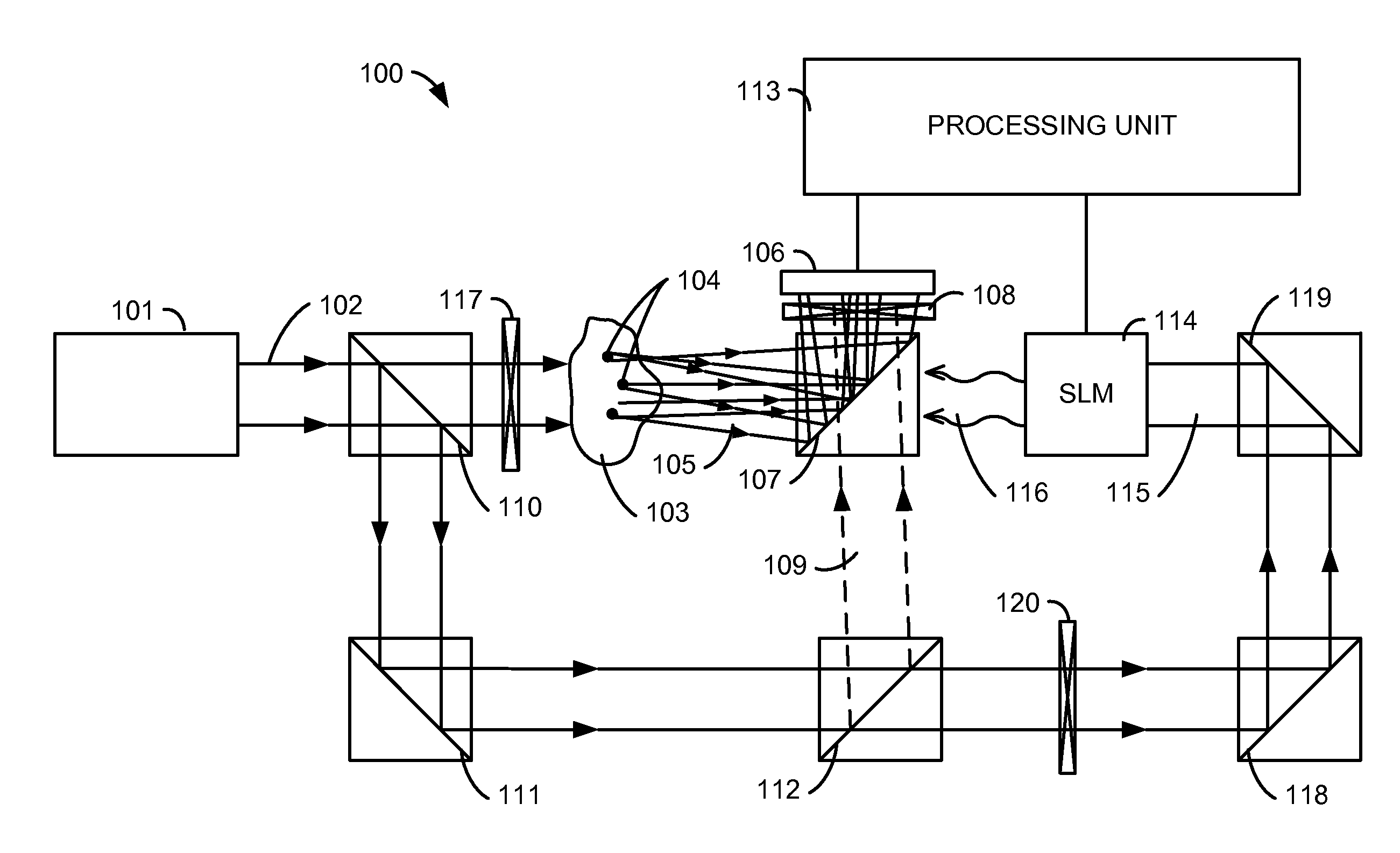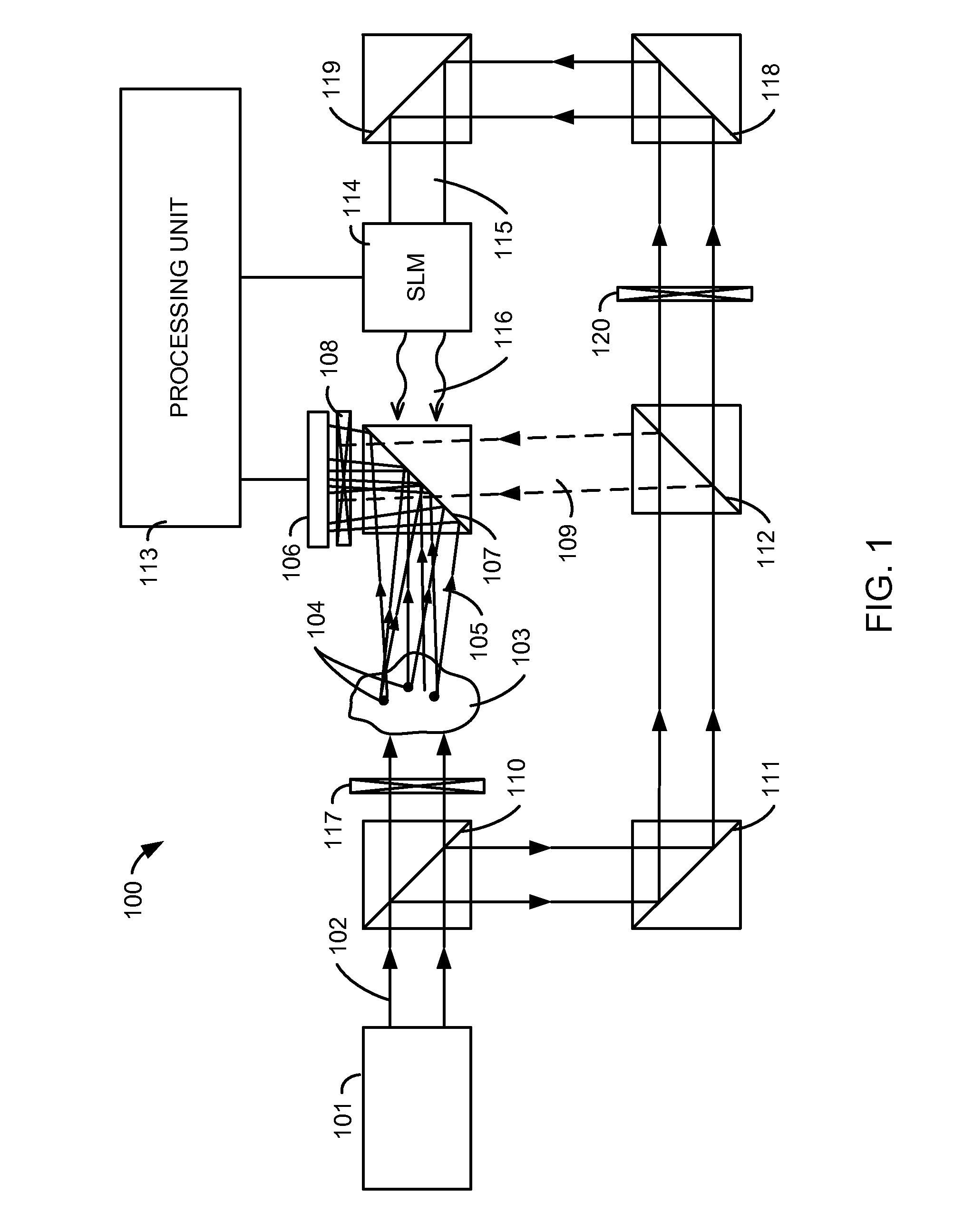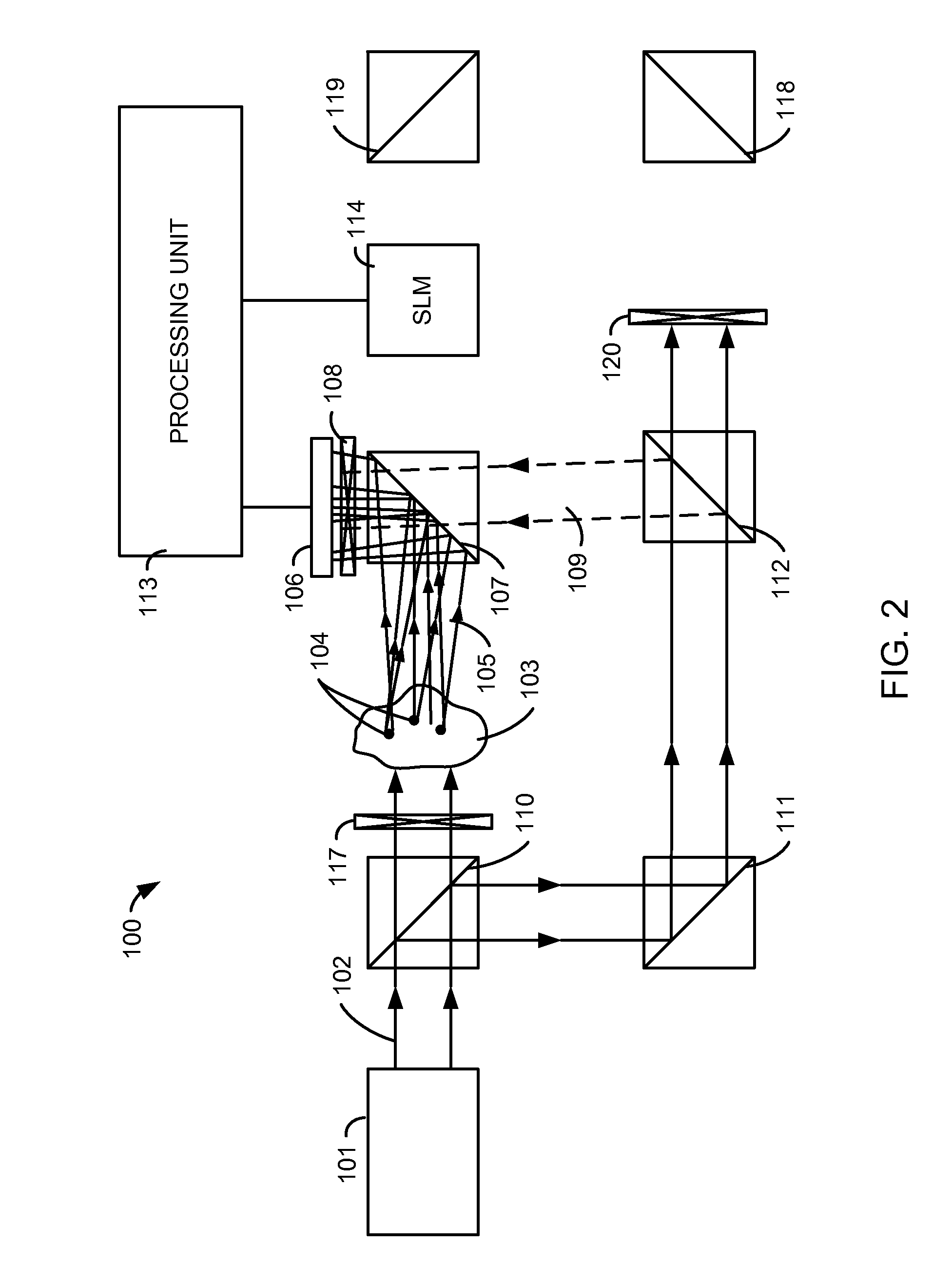Near real time optical phase conjugation
- Summary
- Abstract
- Description
- Claims
- Application Information
AI Technical Summary
Benefits of technology
Problems solved by technology
Method used
Image
Examples
Embodiment Construction
[0017]FIG. 1 illustrates a system 100 in accordance with an embodiment. A laser 101 produces a sample illumination beam 102 that impinges on a turbid or translucent medium 103. Medium 103 may be, for example, a biological medium such as skin tissue, which transmits light readily, but scatters the light passing through it. Certain sites 104 within medium 103 may be tagged or labeled so that they preferentially scatter larger amounts of light than the surrounding tissue. For example, cancer cells within medium 103 may be tagged with metallic nanoparticles using known techniques.
[0018]After the sample illumination beam 102 has passed through medium 103, a sample beam 105 is produced. Sample beam 105 comprises light scattered by medium 103. The scattering appears to be random, but is in fact deterministic, and results from particular features within medium 103. Sample beam 105 is directed to an electronic image sensor 106. For example, sample beam 105 may reflect from a half-reflective ...
PUM
 Login to View More
Login to View More Abstract
Description
Claims
Application Information
 Login to View More
Login to View More - R&D
- Intellectual Property
- Life Sciences
- Materials
- Tech Scout
- Unparalleled Data Quality
- Higher Quality Content
- 60% Fewer Hallucinations
Browse by: Latest US Patents, China's latest patents, Technical Efficacy Thesaurus, Application Domain, Technology Topic, Popular Technical Reports.
© 2025 PatSnap. All rights reserved.Legal|Privacy policy|Modern Slavery Act Transparency Statement|Sitemap|About US| Contact US: help@patsnap.com



